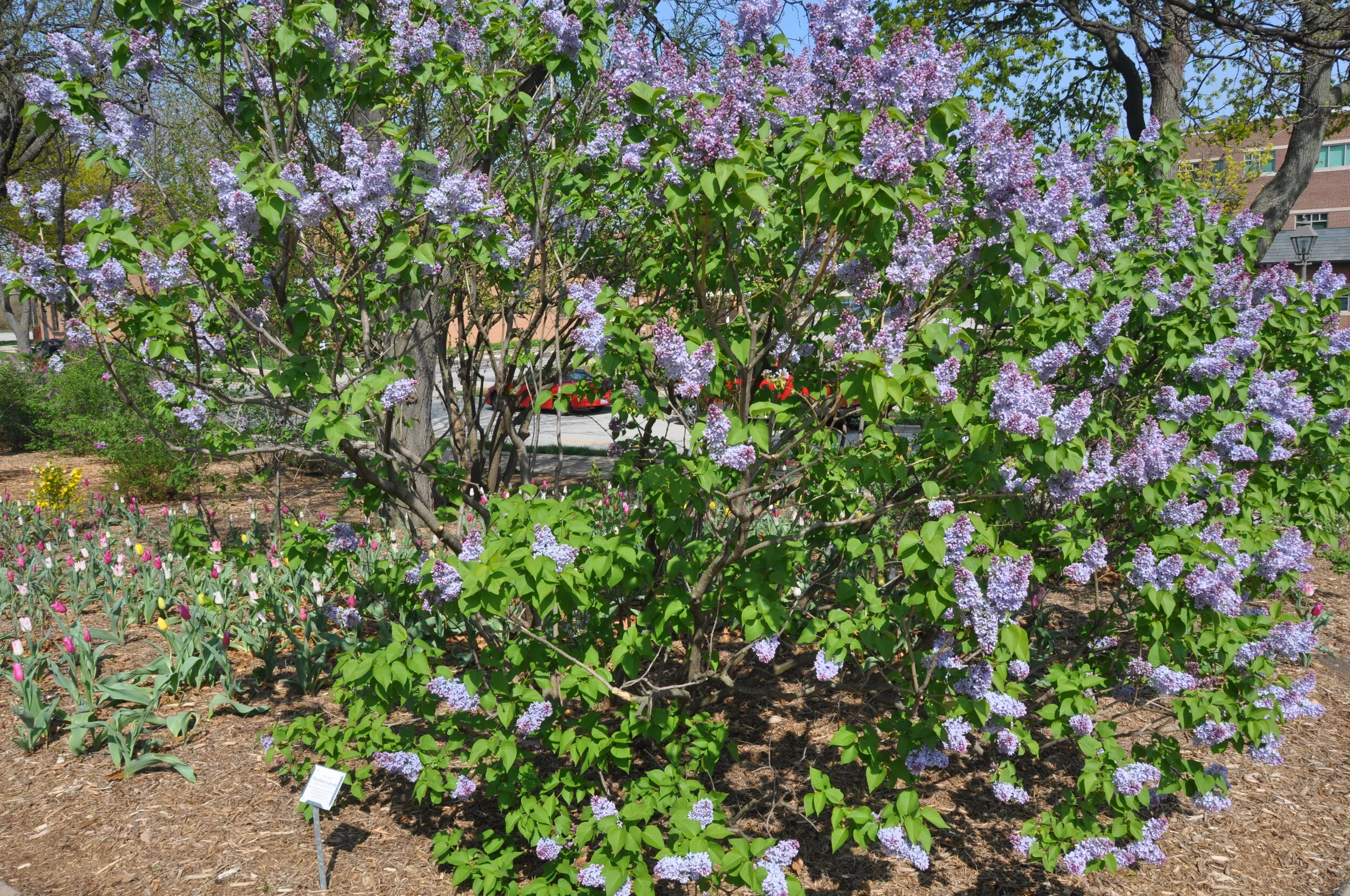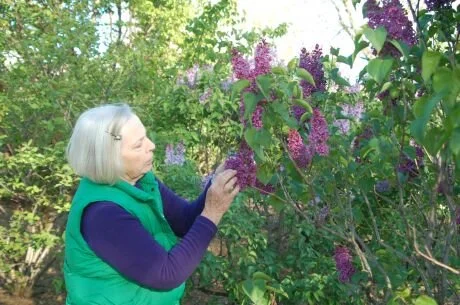A Look at Lilacia Park - What's in a Label?
/Lilacs: There Many Names and Colors
Label, Lilacia Park, c. 2012
Ever wandered through Lilacia Park and wondered why the labels around the lilacs look like this?
There is a wealth of information on these small tags for the park staff and the visitors alike. If we take a tour of the label for the ‘President Lincoln’ lilac, we can discover its story.
A few things first:
o A SPECIES: There are 20 variety of syringa or lilac that NATURALLY occur, aka, without human interference in nature.
o A CULTERVAR: Is the result of human breeding in plants, and what we in North America are more familiar with are the lilacs that have been cultivated by hybridizers who have created more than 2000 named cultivars of the Syringa vulgaris.
Lilac Bush, President Lincoln, Lilacia Park, c. 2012.
If you start in the upper left corner you will see 61/J. That tells the Lombard Park District staff the cultivar’s number and the bed name. Every bed at Lilacia Park has an alphabetical tag and then in that bed, each plant has its number.
Then in the upper right corner of this label, you see S III. This is where you discover that the ‘President Lincoln’ is a single bloom or S. Some lilac cultivars are double blooms so a “D” will replace the “S’. The Roman numeral 3 (III) indicates the color of the bloom.
John Wister, an American horticulturist, developed a simple color classification of lilac cultivars which has seven ranges of color. A lilac bud is graded for color when ⅓ of the buds burst open according to the International Lilac Society. The Wister Chart for the range of colors is as follows:
John Caspar Wister (March 19, 1887 – December 27, 1982).
I White
II Violet
III Blue (‘President Lincoln’ is often called true blue)
IV Lilac
V Pink
VI Magenta
VII Purple
The next stop on the label is the Latin name. It should always appear italicized and should be in Times New Roman font like this Syringa vulgaris, followed by the common name of the cultivar in single quotation marks ‘President Lincoln’. On these labels, the cultivar name is big and bold so that visitors can find it easily.
The remainder of the label contains any other horticultural notes and biographical notes about the plant.
Marymae Meyer, Lilacia Park.
Lombardian, Marymae Meyer, has volunteered many hours at Lilacia Park over the years, identifying lilacs and poring over Colonel William Plum’s records and reading through Plum’s garden notes. Marymae also worked with Lombard Park District horticulturist Jerry Budd to create a database, a digital inventory of the plants, and their locations in the park. She also worked with Dan Price, the GIS technician at Village of Lombard, to create a corresponding map of the planting beds. The labels found by the plants are created from that database.






